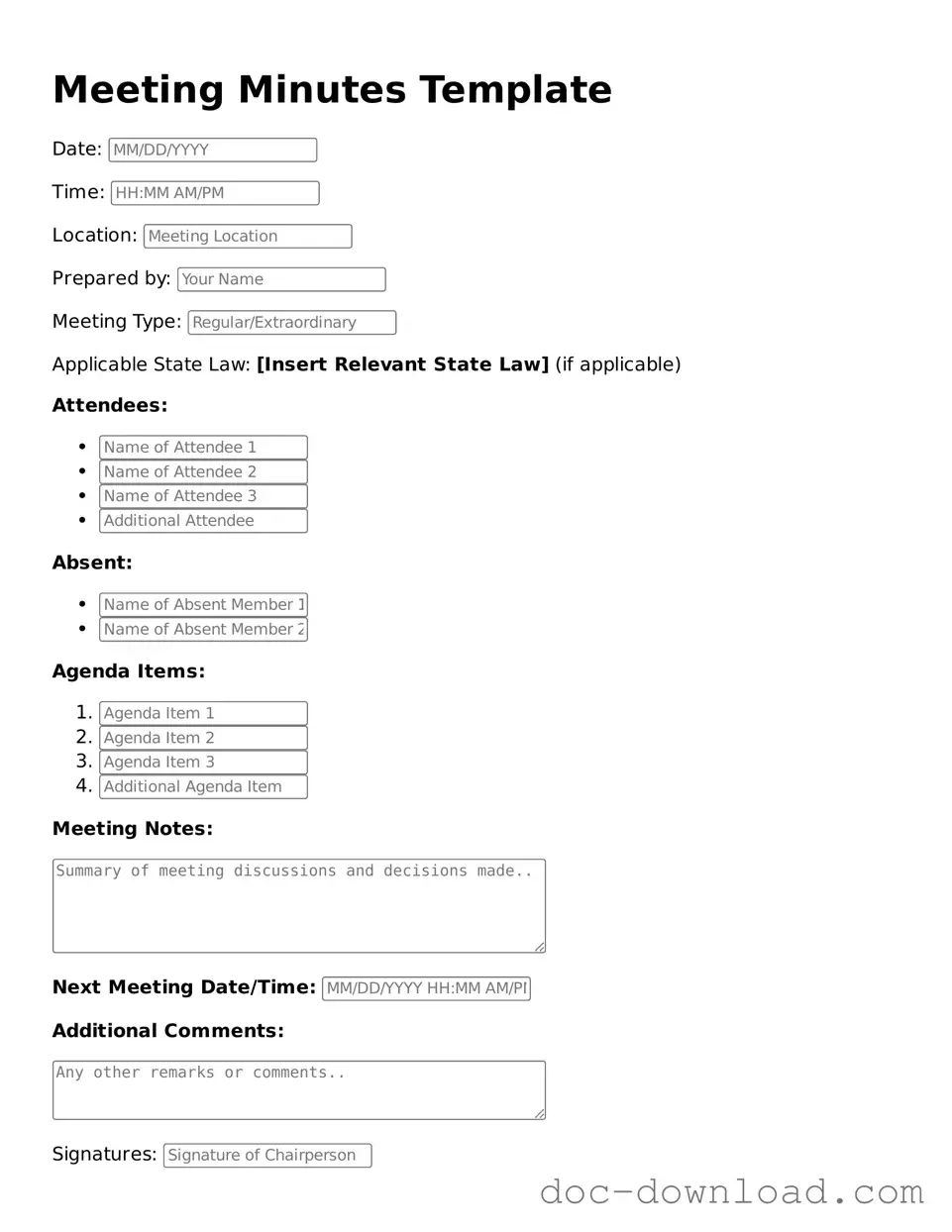The first document similar to Meeting Minutes is the Agenda. An agenda outlines the topics to be discussed during a meeting, providing a roadmap for participants. It serves as a preparatory tool, ensuring that everyone is aware of the key issues at hand. While meeting minutes capture what was discussed and decided, the agenda focuses on what will be addressed. Both documents are essential for effective communication, as they help participants stay organized and aligned on objectives, fostering a productive environment.
Another related document is the Action Items List. This list details the specific tasks assigned to individuals during a meeting, often derived from the discussions noted in the meeting minutes. While meeting minutes provide a summary of the conversation, the action items specify who is responsible for what and the deadlines for completion. This clarity helps ensure accountability and follow-through, making it easier for teams to track progress and achieve their goals.
Meeting Summaries are also akin to meeting minutes, albeit with a slightly different focus. A summary distills the essence of a meeting into a concise format, often highlighting key takeaways and decisions made. While meeting minutes provide a comprehensive record, a summary might be used for quick reference or to inform those who were unable to attend. Both documents aim to enhance understanding and retention of the meeting's content, but they do so in varying levels of detail.
In understanding the nuances of various documents involved in meetings and their implications, it's crucial to also consider the legal aspects of agreements associated with such transactions. For instance, a Hold Harmless Agreement can play an important role in ensuring that parties are protected from potential liabilities that may arise from actions taken during these discussions, particularly in the context of vehicle sales or transfers, reflecting the importance of safeguarding interests while navigating through operational protocols.
Lastly, the Attendance Record is another document that shares similarities with meeting minutes. This record captures who was present at the meeting, providing a formal acknowledgment of attendance. While meeting minutes document the discussions and outcomes, the attendance record serves as a vital tool for tracking participation and engagement. Together, they create a fuller picture of the meeting, ensuring that all aspects, including who contributed to the conversation, are accounted for.
